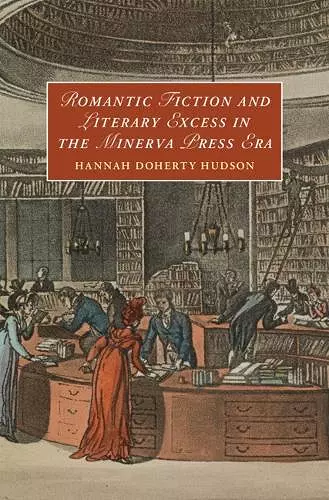Romantic Fiction and Literary Excess in the Minerva Press Era
The impact of mass production on Romantic literature
Format:Hardback
Publisher:Cambridge University Press
Published:11th May '23
Currently unavailable, our supplier has not provided us a restock date

This insightful work examines the impact of novel overproduction during the Romantic period, particularly focusing on the Minerva Press and its influence on literary practices.
In the Romantic period, England witnessed an unprecedented surge in novel publications, leading to a transformative era for literature. Romantic Fiction and Literary Excess in the Minerva Press Era provides a fresh perspective for scholars and book historians, highlighting the dual impact of this mass production on authors, publishers, and readers alike. The book delves into the critiques and innovations that emerged as a response to the overwhelming presence of fiction, illustrated by Jane Austen's ironic remark about the 'trash' flooding the press.
The author, Hannah Hudson, meticulously examines over one hundred Romantic novels to uncover the significant changes in the realms of publishing, reviewing, and writing during this prolific period. With a keen focus on the Minerva Press, renowned for its extensive output, Hudson juxtaposes the works of popular authors with those of literary giants such as Walter Scott and Ann Radcliffe. By incorporating paratextual materials like reviews and advertisements, the book reveals the widespread anxieties surrounding literary 'excess' and how these concerns shaped new literary hierarchies.
Ultimately, Romantic Fiction and Literary Excess in the Minerva Press Era argues that the perceived overproduction of novels was not merely a problem but a catalyst for creative experimentation. This exploration of the Romantic conviction that there were 'too many' novels illustrates how such beliefs redefined the publication landscape and influenced the reception of fiction during a pivotal time in literary history.
ISBN: 9781009321969
Dimensions: 235mm x 159mm x 22mm
Weight: 600g
280 pages